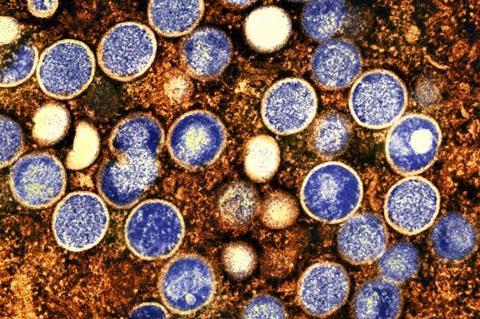Mpox, formerly known as monkeypox, is a rare viral disease that is spread through physical contact between people. Currently, testing for mpox requires lab equipment and can take a few hours to get test results. But new research suggests a way for faster testing that could be done in any clinic soon.

Md. Ahasan Ahamed, a graduate student mentored by Weihua Guan at Pennsylvania State University will present this research at the 68th Biophysical Society Annual Meeting, to be held February 10 - 14, 2024 in Philadelphia, Pennsylvania.
Though mpox symptoms are generally mild with fever, rash, and swollen lymph nodes, severe cases can occur and require medical attention. Because the disease is contagious, testing is important so that people with the disease can isolate until symptoms resolve or get appropriate medical care.
Gene editing
To develop a faster test, the researchers used CRISPR, the Nobel-prize winning gene editing technology. Since 2017, scientists have expanded the application of CRISPR technology from gene editing to molecular diagnostic techniques.
For this study, Ahamed created a genetic sequence combined with a reporter to specifically target the mpox virus. Then a programmable CRISPR RNA binds to both the target and a protein called Cas12a and together, the CRISPR/Cas12a cleaves the reporter to create various sizes of fragments. The researchers can then use nanopore sensing technology to analyze those reporters’ fragments, providing a rapid and accurate test that detects whether or not mpox is present in the sample.

The team confirmed that the test they created is specific to mpox—when they tested samples of cowpox virus, a close relative of mpox, the test did not show a positive result.
Less than an hour
The whole process is quick - “In total it takes 32 to 55 minutes to detect the target, depending on viral load,” Ahamed said. This is much faster than it currently takes to test for mpox in a lab using the PCR method.
The researchers plan to apply this nanopore technology to create tests for other pathogens, allowing one sample to be tested for multiple targets using portable device. And while the technology is not currently commercially available, Ahamed is hopeful that they will soon create a device that could make this kind of pathogen testing widely available.







No comments yet